What is Body Awareness and how does it work?
Body awareness is the ability to interpret sensory information arising from joints, muscles, skin and inner ears of the body. These specialized sensory receptors are termed “somatosensory receptors”. They function by relying upon a multitude of moment to moment reactions incorporating concepts of how the body is situated in space, how the body parts are positioned, whether or not the body parts are moving or still, and whether or not the body is in contact with external objects..
Body awareness helps us to understand how to physically orient ourselves as we come into contact with objects and people at home, at school and in social situations. For example, body awareness lets us know how much force we are using when slapping another person a “high five”, how to gently hold lightweight objects so as to not break them, or even how still we are standing so that mom (or dad) can arrange our hair.
How do sensory receptors contribute to body awareness?
Specialized receptors in the joints, muscles and ears:
Slow and fast adapting sensory receptors in tendons, muscles, joint capsules, and inner ear signal the brain in response to stretch and displacement. The brain in turn, interprets the direction, force, and distance of the movement.
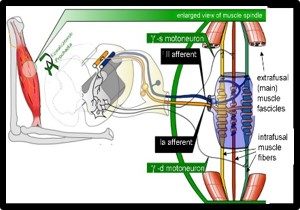
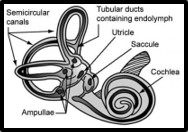
Specialized receptors in the skin:
Dedicated sensory receptors in the upper, mid, and lower portions of the skin respond to different types of touch when the skin is deformed. Each nerve ending sends a signal to corresponding areas of the brain cortex when their threshold for displacement has been met.
How does the brain know where somatosensory signals come from?
The upper mantle of the brain (the cortex) consists of various “maps” that detail where specific types of information is processed. Sensory systems are “hardwired” so that their neurons terminate within specific regions of the brain. Bundles of interneurons then link the multiple systems together so that cause and effect can occur.
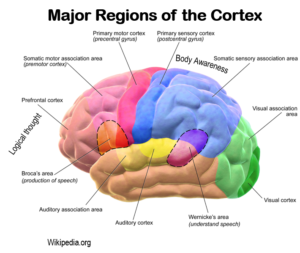
A. Analyzing the roles of the receptors :
The vestibular apparatus of the ears send signals appraising the brain of movement and dynamic positioning of the body in space so that the postural muscles can respond providing balance and
dynamic equilibrium.
The tendons and joint receptors of the moving body parts send signals appraising the brain of their displacement and stretch so that the brain can orchestrate smooth, synergistic moves in anticipation of postural demands (i.e. holding the head up as the upper body moves forward)
The receptors in the layers of the skin send signals that appraise the brain of touch, pressure, and displacement so that requisite weight shifting can occur to avoid a fall.
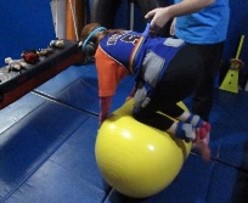
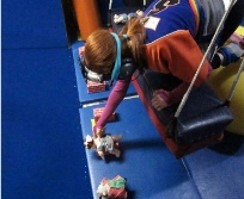
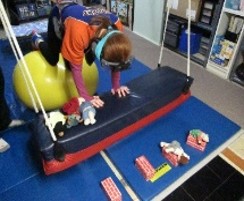
B. Processing the data
Input from somatosensory receptors of the body are coupled with visual input so that the brain can determine which motor plan would be best for this activity. This teenager will need to balance her body on the physioroll while keeping her eyes on her target. The end goal will be to carry the beanie babies over to the glider, and from there to place them onto the blocks.
Types of Activities that Promote Development of Body Awareness
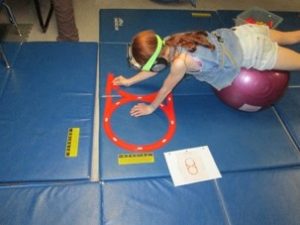
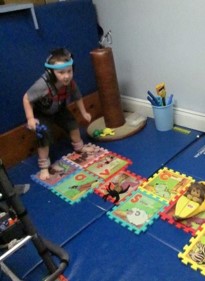
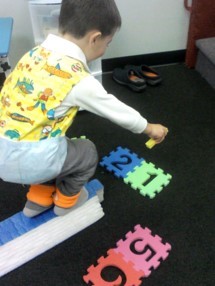
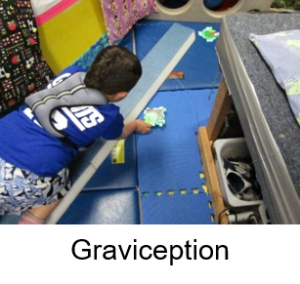
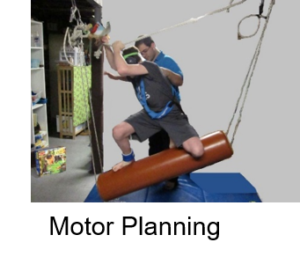
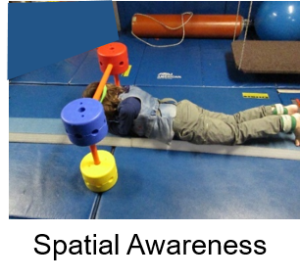


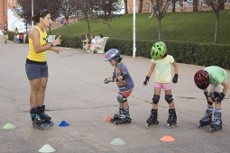
One Response to “Body Awareness A.K.A. Somatosensory Perception”